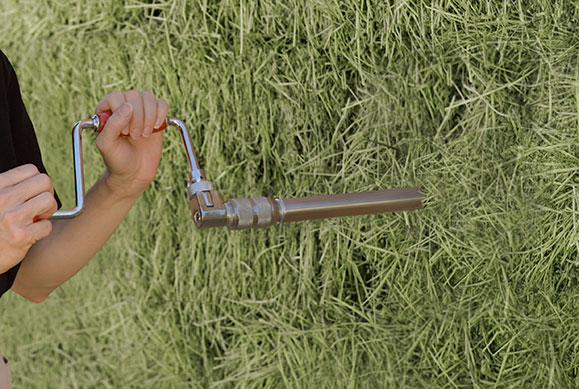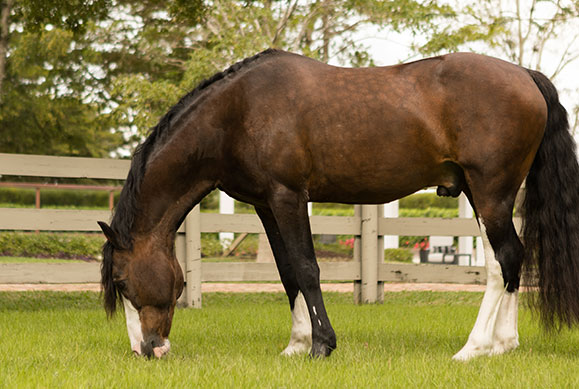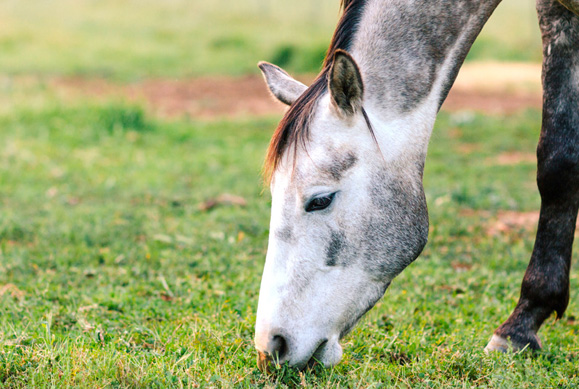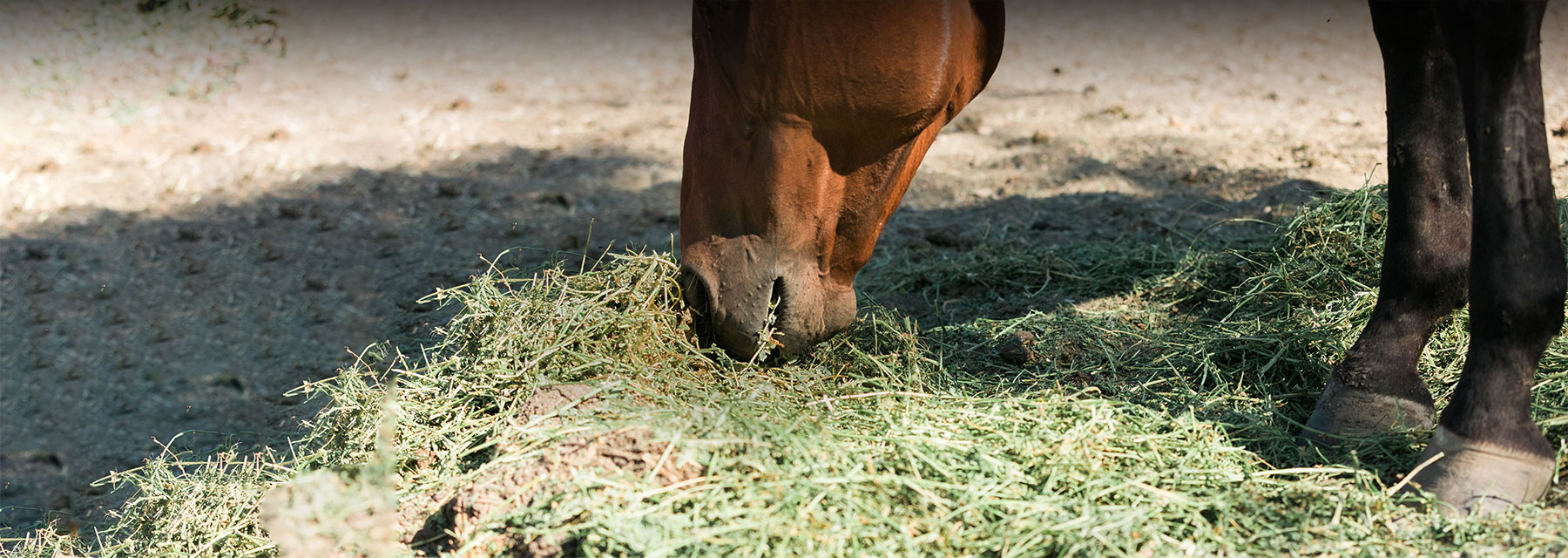Stacking up Hay
Forage is the cornerstone of all equine diets. For most horses in the United States, forage is provided as pasture grass or hay. Fresh grass is living forage and an ideal food for horses. It contains about 80% water and provides an excellent blend of protein, fat, energy, fiber, minerals and vitamins needed for health. Several nutrients, including beta carotene (needed to make vitamin A), vitamins C, D, E and omega-3 fatty acids, are lost in the baling process when turning fresh grass to hay. With appropriate supplementation, long-stem hay is the next best thing to serve as a dietary foundation when grass is not available. For many horses, hay makes up the majority, if not all, of the diet.

There are several forms of hay available to feed horses. Baled, long-stem hay is the most commonly used. The term “long stem” usually refers to hay that is 2 inches or more in length and is necessary to keep the digestive tract functioning properly. There are also processed alternative hay options such as hay cubes and pelletized hay. Hay cubes are compressed cubes of chopped hay that may contain some longer stems but are mostly considered to be a shorter-stem forage option. Hay pellets are short-stemmed, available in different sizes and have been ground and treated with heat and steam to change the form of the hay. The nutrient composition of hays remains similar regardless of processing. However, there are some fundamental differences amongst forage choices.

Chew on This: Benefits of Long-Stem Hay
One of the most significant differences when comparing long-stem and short-stem forages is the reduction in chew time for consuming shorter-stem hay choices. Total time spent chewing increases dramatically when horses are fed long-stem hay. This increases saliva production that contains high concentrations of beneficial calcium and sodium bicarbonate to buffer the gastric acid that is constantly being secreted into the equine stomach. As grazing animals, horses are designed to spend the majority of the day chewing and producing this natural salivary buffer, and without it, they are predisposed to excess stomach acid that increases the risk for gastric ulcers.
Another major health benefit from long-stem forage is that it slows overall consumption. The horse’s digestive tract is designed to optimally function with a nearly continuous amount of fibrous bulk that moves slowly through the foregut and is fermented and broken down in the hindgut. The microbial population that resides in the hindgut relies on this consistent flow of digesta to appropriately ferment fibrous feedstuffs, providing vital nutrients and energy to the horse. Hay pellets are often eaten significantly faster, which simulates a “meal” feeding. When finished, without long-stem hay available, the horse has nothing to graze on. For stalled horses in particular, this can lead to undesirable behavioral issues such as cribbing, weaving, wood chewing and stall walking.
Water consumption is higher in horses fed long-stem hay. Water is important for many health reasons. Specifically concerning digestion, it is a natural gastrointestinal lubricant and helps to move food through the digestive tract at a healthy rate. Hay cubes and pellets may have a greater risk of choke in some horses and are typically recommended to be soaked in water before feeding.

Short-Stem Situations
Many horse owners appreciate the management benefits of hay cubes and pellets because they take up less space, are less dusty and can be less wasteful. They are often used when long-stem hay choices are of inferior quality or are difficult to obtain. Short-stem options can be helpful to augment a feeding program that includes long-stem hay to provide consistent, high-fiber calories, balance a diet or as a supplement carrier. Some people use short-stem hays as a reliable source of forage while traveling or changing horses over from one hay to another to keep consistency in the diet. There are also horses, especially seniors with poor dentition, that may be unable to chew long-stem forage appropriately. For these horses, pellets or hay cubes can be a critical source of fiber and general nutrition.
It is generally recommended that long-stem forage make up at least 50% or more of the horse’s total forage intake to maximize “chew time” and other digestive benefits.
The Long & Short of It
Horses are able to survive without long-stem forage, but are more likely to thrive with it as a regular part of their daily diet. Short-stem forage options can be useful in many ways, but should not replace long-stem forage in the diet if horses are capable of chewing it. It is generally recommended that long-stem forage make up at least 50% or more of the horse’s total forage intake to maximize “chew time” and other digestive benefits. Long-stem forage should be available to horses on a continual basis for physiological and behavioral health.

by Emily Smith, MS,
Platinum Performance®
You May Also Like

Understanding a Hay Analysis: Getting to Know the Nutrients
There is value in knowing what you are feeding your horse, so you can better fill in any nutritional gaps.
Read More
Carbohydrate Confusion & the Equine Diet
Not all carbs are the same, but carbohydrates are a horse's best source of energy because of fiber.
Read More
Feeding Frenzy: A Forage-First Approach
It's Time to Change Traditional Feeding; Forage as the Foundation, or Entirety, of the Diet is the Healthiest Choice.
Read More about a Forage-First Approach